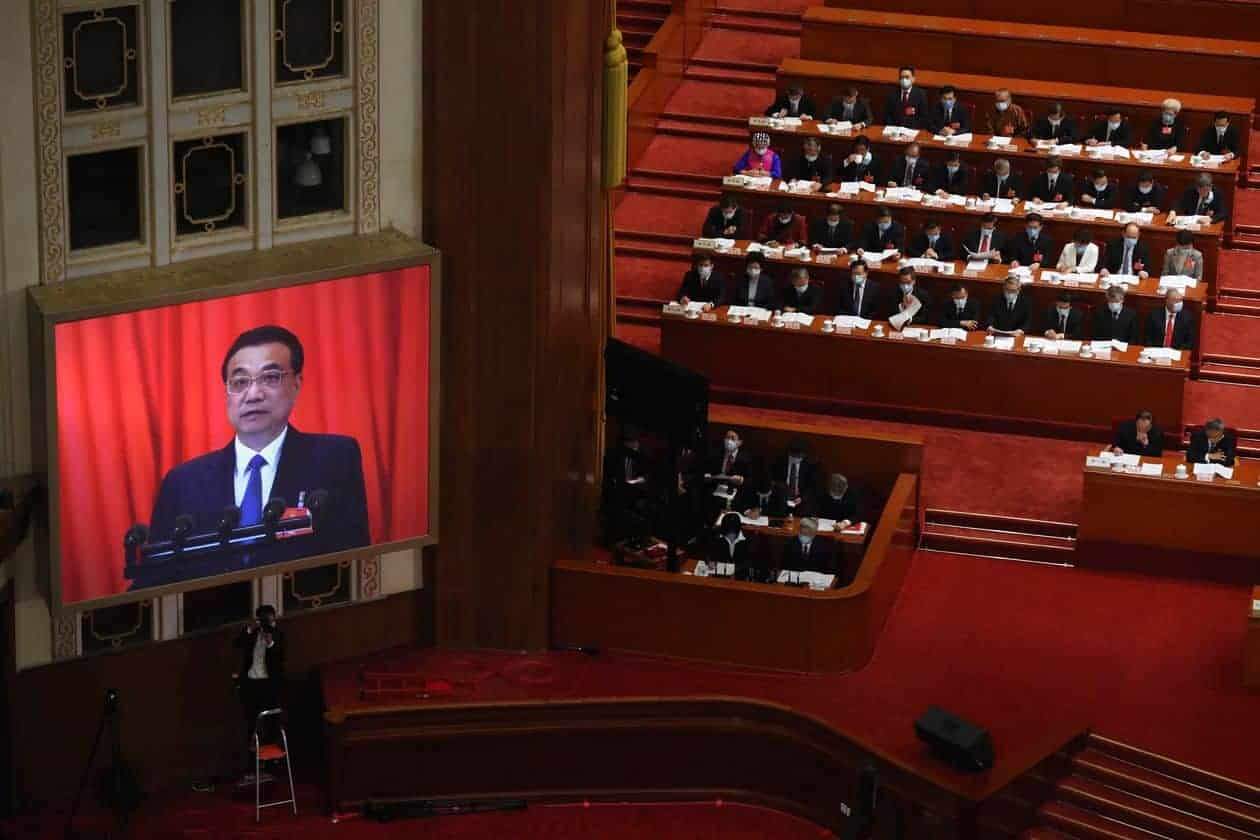China’s Trillion-Dollar Campaign Fuels a Tech Race With the U.S.

China has embarked on a new trillion-dollar campaign to develop next-generation technologies as it seeks to catapult the communist nation ahead of the U.S. in critical areas.
Since the start of the year, municipal governments in Beijing, Shanghai and more than a dozen other localities have pledged 6.61 trillion yuan ($935 billion) to the cause, according to a Wall Street Journal tally. Chinese companies, urged on by authorities, are also putting up money.
Under a plan outlined earlier this year by China’s Ministry of Industry and Information Technology, these efforts would contribute to at least $1.4 trillion in investments during the next five years in artificial intelligence, data centers, mobile communications and other projects.
At China’s annual legislative meeting last month, China’s Premier Li Keqiang said the campaign was a top priority of the Communist Party and would give the country a “new-style infrastructure.”
That marked a subtle shift from months earlier, when Chinese leaders played down their previous industrial policy, known as Made in China 2025. The Trump administration has pointed to that previous policy as evidence of Beijing’s intent to subsidize national champions and tilt the playing field against foreign companies.
A key aspect of Made in China revolved around replacing foreign tech components with local products, said Caroline Meinhardt, an analyst at the Mercator Institute for China Studies in Berlin. That goal hasn’t changed, even though the new plan doesn’t explicitly call for a similar push, she said.
China’s program is likely to add heat to the U.S.-China technology race as Beijing seeks a global edge in construction of superfast cellular networks known as 5G. It could also serve as an important source of economic stimulus to cushion the impact of the global coronavirus-related slowdown.
“China is still a heavily planned economy,” said Lester Ross, policy committee chairman at the American Chamber of Commerce in China. “Such plans are a significant driver of economic policies.”
The new campaign has a similar thrust to Made in China 2025, but is both more targeted at cutting-edge technologies and broader in its ambitions. It focuses on upgrading technology throughout the Chinese economy and relies mostly on investment from the private sector and local governments instead of national government spending.
Unlike utilities and roads, new-style infrastructure investments such as vehicle charging stations offer better returns for private investors, Sun Guojun, a senior official with China’s cabinet, the State Council, said at a news conference in late May. The central government would provide policy support to the campaign, partly as a bid to increase domestic demand, Mr. Sun said.
This week, Chinese cities Beijing and Guangzhou announced new spending and projects related to the plan. Beijing aims to build 13,000 new 5G base stations by the end of 2020, while Guangzhou officials said they would increase spending to 500 billion yuan, up from 180 billion yuan announced previously, according to the city’s government work report.
The government is pushing hardest for investment in building new 5G networks. Supercharged 5G mobile connections are expected to underpin a whole new world of next-generation connected devices, collectively known as the internet of things, that businesses believe could revolutionize daily life and manufacturing alike.
China hopes to more than triple the number of 5G base stations to 600,000 by the end of the year, according to the state-run Xinhua News Agency. In 2019, Bernstein Research said the U.S. was on pace to install 10,000 5G base stations by the end of that year.
In March, China’s three national telecom carriers collectively promised to invest about 220 billion yuan to build 5G base stations.
The rest of the money is slated to flow into the building of new data centers and intercity rail networks, development of homegrown artificial intelligence chips, smart factories, electric-vehicle charging stations and ultrahigh-voltage power facilities.
Local governments have rushed to announce their investments. Shanghai’s government said this April it would pump 270 billion yuan on artificial intelligence, the industrial internet of things and other advanced technologies. Neighboring Jiangsu province said it plans to invest 182 billion yuan in its own new infrastructure projects.
Tencent, which runs China’s popular do-everything app WeChat, said last month it would invest 500 billion yuan during the next five years in new infrastructure technologies like cloud computing and cybersecurity. Its rival, e-commerce giant Alibaba, pledged 200 billion yuan in similar outlays over three years.
In his work report last month, Mr. Li said the government planned to issue 3.75 trillion yuan in bonds and spend another 600 billion yuan to support the digital infrastructure push, as well as accelerate urbanization and upgrade traditional infrastructure like roads and bridges.
Preferential policies favoring Chinese companies mean foreign companies are unlikely to see much of a windfall from the campaign, foreign business groups said.
“Such an unfair playing field may exacerbate the current trend of global decoupling of supply chains and increase protectionism,” the European Union Chamber of Commerce in China said in a statement.
Continuing trade friction with the U.S. could hinder the rollout of the new Chinese plan, at least in the short term, as many of the Chinese companies involved still rely on the U.S. for critical components. That includes China’s dominant maker of 5G equipment, Huawei Technologies Co., which has been placed on a U.S. export blacklist.
Chinese leaders also have a track record of allowing political goals to skew industrial plans, leading to overspending in areas where there’s little demand, according to analysts.
“Demand for 5G in China isn’t quite there yet,” said Dan Wang, a technology analyst with research consultant GaveKal Dragonomics in Beijing. “For now, it remains a solution looking for a problem.”
Photo: Chinese Premier Li Keqiang delivered a report last month during the country’s annual legislative meeting calling for a ‘new-style infrastructure.’ - NG HAN GUAN/ASSOCIATED PRESS











